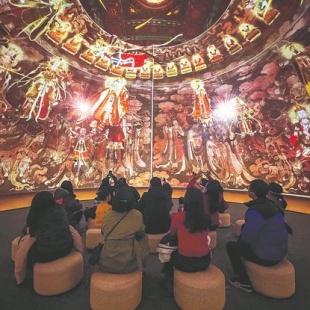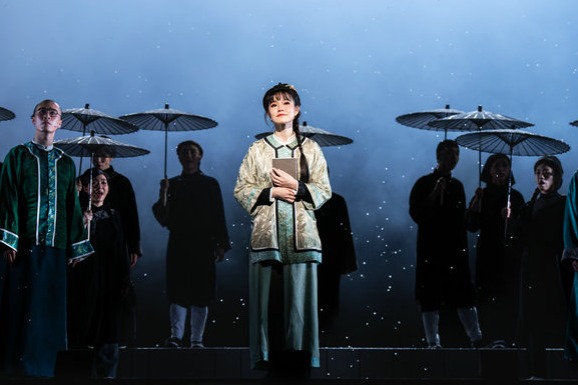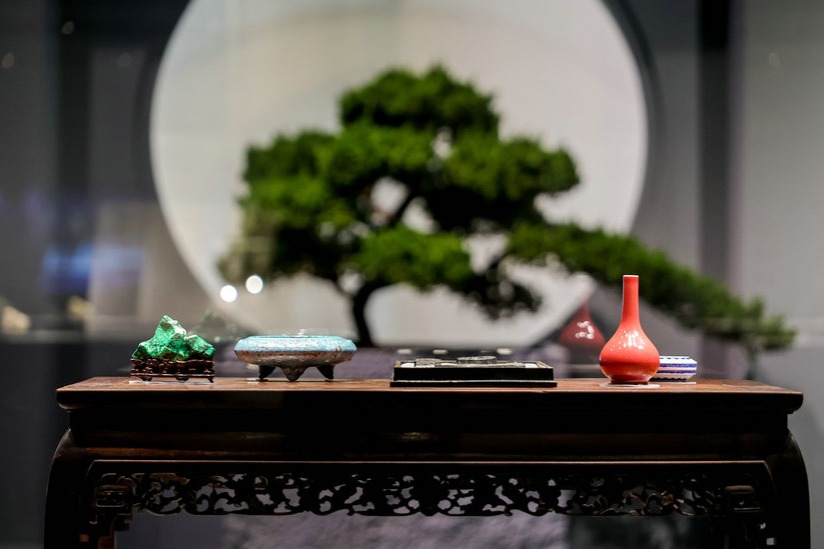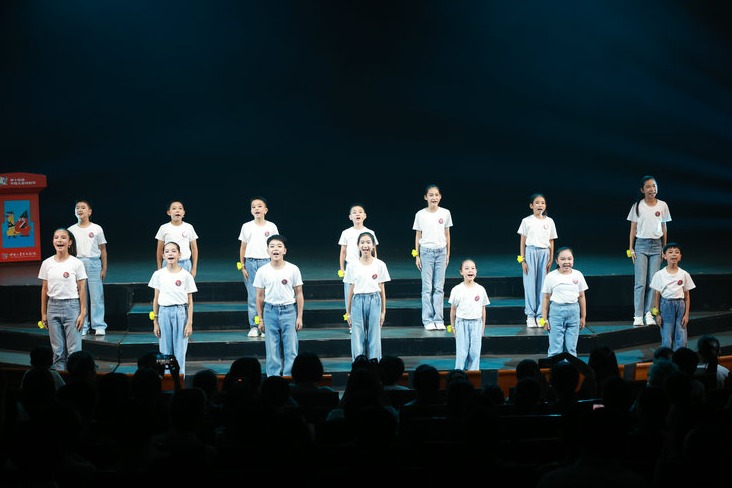IT expert finds true calling among frescoes

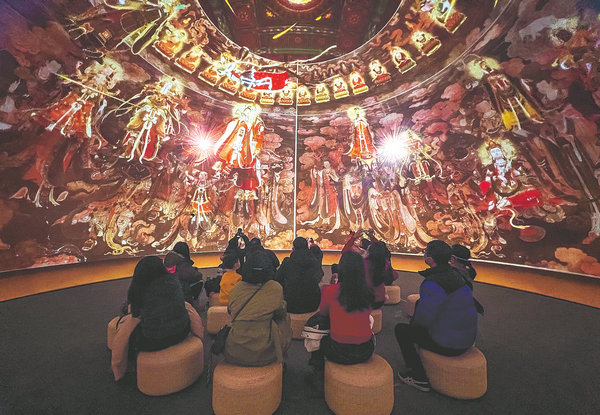
Fahai Temple Mural Art Center uses digital tools to take visitors on an immersive journey in Beijing
Editor's note: Modern technology is being used for the protection of cultural relics and to create new ways of popularizing the country's cultural heritage.
The Fahai Temple, located at the southern foot of Cuiwei Mountain in the western part of Beijing, houses Ming Dynasty (1368-1644) frescoes dating back nearly 600 years.
Today, a brand-new art center has been built at the foot of the mountain, where visitors can immerse themselves in a digitalized journey of discovery.
"By utilizing modern technology, valuable digital assets have been created, allowing the 'dormant' frescoes to come to life,' says Liu Xiaobo, curator of the Fahai Temple Mural Art Center.
The center represents the accumulation of years of exploration and preservation of the cultural relics in Beijing's Shijingshan district where it is located.
Fahai Temple was first built in 1439 during the reign of Zhengtong in Ming Dynasty. It is noted for its frescoes, and is known as one of the "three major fresco sites in China" together with the murals found in Dunhuang of Gansu province and Yongle Palace in Yuncheng, Shanxi province.
"The frescoes depict 77 figures, including men, women, the elderly, children, Buddhas and bodhisattvas, each with different postures and expressions, still vibrant in color after nearly 600 years," says Liu, who is an enthusiast of murals and ancient architecture.
"I have read so many books and visited numerous temples to see murals. The murals in Fahai Temple are among the best," Liu says.
"These exquisite frescoes originated from the imperial court were completed by 15 artists who were led by the royal painter Wan Fuqing. They employed traditional techniques that render the frescoes with vivid effect."
The most exquisite depiction is one of the goddess Guanyin draped in a white gauzy garment and adorned with clusters of six-petal flowers. Each petal was composed of 48 threads of gold, as delicate as spider silk and as thin as cicada wings, shining brilliantly and astonishing to behold.
Despite the brilliance of this Ming Dynasty fresco art, it did not maintain its splendor throughout history. With the demise of the dynasty, its prosperity came to an abrupt end.
In 1937, the British journalist Angela Latham published her experience of visiting Fahai Temple in the Illustrated London News, bringing the silent Fahai Temple back into public view.
Currently, the original frescoes are being protected and opened to the public in a controlled manner. Visits are arranged by appointment, with each viewing session limited to about 20 minutes. Visitors can only use cold light sources throughout the visit, allowing the original frescoes to "rest" more.
- Creatives find their muse in small town culture
- Chinese historical TV drama set for global audience
- Dance artist Jin Xing reflects on spectacular anniversary shows
- Chinese culture is ‘an untapped resource’ -- British graphic designer
- Chinese New Year exhibition at Paul Smith's London store celebrates female artists


